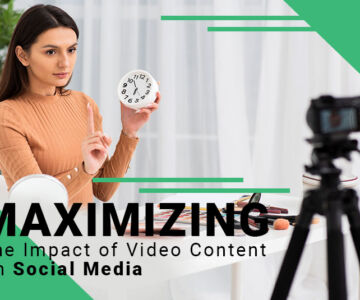 The Complex Relationship Between Spotify and Music Royalties: What Every Music Lover Should Knowby admin / July 11, 2024
The Complex Relationship Between Spotify and Music Royalties: What Every Music Lover Should Knowby admin / July 11, 2024The Psychology Behind Social Media Addiction
In today’s digital age, social media addiction has become an integral part of our daily lives. While these platforms offer numerous benefits, such as staying connected with friends and family, sharing moments, and accessing information, they can also lead to a phenomenon known as social media addiction. Understanding the psychological mechanisms behind this addiction can help us recognize its impact on our mental health and find ways to manage our social media usage more effectively.
The Dopamine Loop: Instant Gratification
One of the primary reasons social media is so addictive is the instant gratification it provides. Each like, comment, or share triggers the release of dopamine, a neurotransmitter associated with pleasure and reward. This creates a cycle where users continually check their notifications and feeds to receive that next “hit” of dopamine, similar to the way gambling or substance abuse works.
After posting a photo on Instagram, a user eagerly checks their phone to see the number of likes and comments. The excitement from gaining popularity keeps the user posting more frequently, seeking that same rush of satisfaction.
Social Validation and Self-Worth
Social media platforms thrive on social validation. The number of likes, comments, and followers we accumulate often serves as a metric for our self-worth and social standing. This can lead to an unhealthy obsession with maintaining a certain image and constantly seeking approval from others, reinforcing the addiction.
A user feels anxious if their Facebook posts don’t receive many likes. They spend hours crafting the perfect post to ensure it gets a high level of engagement, equating the number of likes with their self-worth.
Fear of Missing Out (FOMO)
Fear of Missing Out, or FOMO, is another significant factor driving social media addiction. The constant stream of updates and highlights from others’ lives can make us feel like we’re missing out on exciting events or experiences. This fear compels us to stay glued to our screens, ensuring we don’t miss any moment, no matter how trivial.
A user stays up late scrolling through Instagram stories, worried they’ll miss out on important events others are attending. Even when they have work the next morning, the fear of missing out keeps them engaged long past their bedtime.
Social Comparison
Social media encourages comparison with others, which can negatively impact our self-esteem. Seeing curated versions of other people’s lives often leads us to compare them to our own, resulting in feelings of inadequacy or envy. This perpetual comparison can create a cycle of negative emotions, driving us to seek more social media engagement to compensate.
A user feels a pang of jealousy when they see vacation photos on Facebook. They start comparing their own life to those in the photos, feeling inadequate and unhappy with their own experiences.
The Role of Algorithms
Social media platforms use sophisticated algorithms to keep users engaged. These algorithms analyze our behavior and preferences to show us content that is likely to keep us scrolling. By presenting personalized content, these platforms make it harder for users to disconnect, contributing to prolonged usage and potential addiction.
A user notices that their TikTok feed always shows videos matching their interests, making it difficult to stop scrolling. The personalized content keeps them engaged for hours without realizing how much time has passed.
The Paradox of Connection
While is designed to connect us, it can paradoxically lead to feelings of loneliness and isolation. The superficial nature of online interactions often lacks the depth and authenticity of face-to-face communication, leaving us craving genuine human connection. This can create a vicious cycle where we turn to social media to alleviate loneliness, only to feel more isolated in the end.
Despite having hundreds of friends on Facebook, a user feels lonely and disconnected. The superficial interactions and lack of deep, meaningful conversations on social media leave them craving genuine human connections.
Social Media Usage Per Day and Its Statistics
On average, individuals spend a significant amount of time on various platforms, which has implications for their mental health, productivity, and social interactions. Here are some key statistics and insights about social media usage:
Global Usage Statistics
- Average Daily Time Spent: According to recent data, the average person spends about 2 hours and 24 minutes per day on social media platforms. This time is often spread across multiple platforms such as Facebook, Instagram, Twitter, TikTok, and Snapchat.
- Platform-Specific Usage:
- Facebook: Users spend an average of 58 minutes per day on Facebook.
- Instagram: Instagram users typically spend about 53 minutes per day on the app.
- TikTok: TikTok sees higher engagement, with users spending around 89 minutes per day on the platform.
- YouTube: Users spend about 40 minutes per day on YouTube.
- Age Group Variations:
- Teens and Young Adults: Younger demographics tend to spend more time on social media. For instance, teenagers might spend up to 3 hours per day on platforms like TikTok and Instagram.
- Adults: Adults between the ages of 18-29 are also heavy users, averaging about 2-3 hours per day. Usage tends to decrease with age, with older adults spending less time on social media.
- Regional Differences:
- In regions such as North America and Europe, social media usage is generally high, with daily averages aligning closely with global statistics.
- In Asia, particularly in countries like India and Indonesia, there is also significant social media engagement, often exceeding the global average due to large, tech-savvy populations.
Managing Social Media Usage – Understanding Psychology behind Social Media Addiction
Understanding the psychology behind social media addiction is the first step in managing it. Here are some strategies to help maintain a healthy relationship with social media:
- Set Time Limits: Use built-in features or third-party apps to monitor and limit your social media usage. Eg: A user utilizes the “Screen Time” feature on their phone to limit social media usage to one hour per day.
- Digital Detox: Regularly take breaks from social media to reconnect with the offline world. Eg: Once a month, a user takes a weekend off from all social media to spend time hiking and reconnecting with nature.
- Mindful Usage: Be conscious of why you are using social media and how it makes you feel. Avoid mindless scrolling. Eg: Before logging into Twitter, a user takes a moment to reflect on why they want to use the app and sets an intention for their time online.
- Cultivate Real-Life Connections: Prioritize face-to-face interactions and build meaningful relationships offline. Eg: A user organizes weekly meetups with friends to ensure they maintain strong offline relationships.
- Content Control: Curate your feed to include positive and inspiring content, and unfollow accounts that trigger negative emotions. Eg: A user unfollows accounts that make them feel bad about themselves and instead follows pages that promote positivity and personal growth.
Conclusion
Understanding the psychology behind social media addiction is crucial in today’s digitally-driven world. By recognizing these psychological mechanisms, we can take proactive steps to manage our social media usage more effectively.
Ultimately, by balancing our digital and offline lives, we can enjoy the benefits of social media while minimizing its negative impact on our mental health and well-being.



